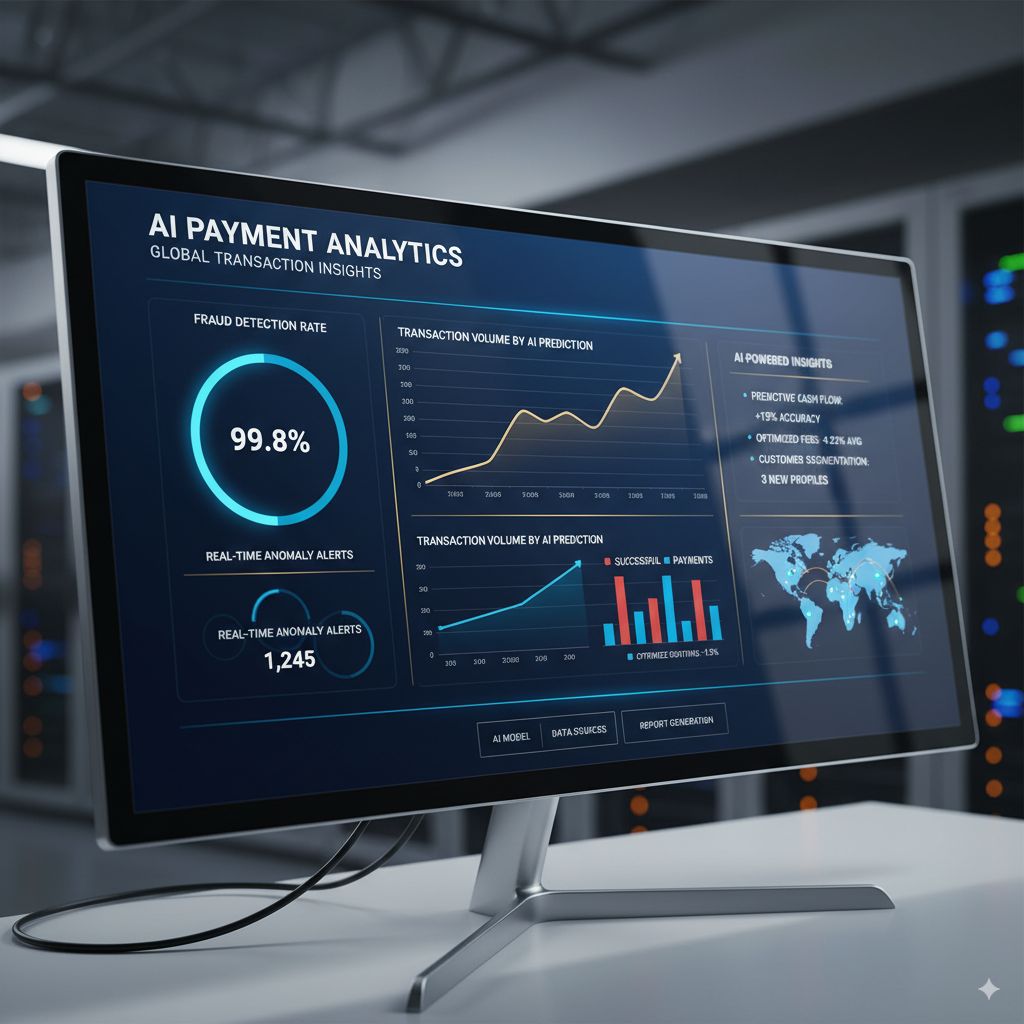Introduction
AI in payments is revolutionizing the industry, offering businesses new opportunities to boost revenue and cut costs. Through real-time analysis and automation, companies can optimize every stage of the transaction lifecycle.
Context
Businesses face increasing pressure: more demanding customers, sophisticated fraud threats, mistakenly declined payments, and rising transaction costs. AI provides a concrete solution, analyzing hundreds of signals per payment and making strategic decisions in real time.
Quick Definition
AI in payments applies intelligent algorithms to optimize security, conversion, and transaction management.
Main Applications of AI in Payments
- Fraud detection: analyzes patterns and anomalies to prevent fraudulent activity
- Performance monitoring: optimizes flows and conversions
- Compliance: selectively applies security measures
- Customer communication: personalizes checkout experiences
The Challenge
Many companies fear falling behind in AI adoption: 59% feel they lag behind competitors. Main concerns include tool accuracy, impact measurement, data quality, and knowing where to start.
Solution / Approach
AI enables payment experience personalization by analyzing factors like customer profile, device, location, and local preferences. This ensures only the most relevant payment methods are shown, reducing cart abandonment and increasing conversion.
- Checkout optimization: personalized experiences based on real-time data
- Compliance simplification: targeted security without unnecessary hurdles
- Fraud reduction: adaptive systems that learn from new risks
- Authorization rate increase: strategic retry and optimal routing
- Dispute management: preventive identification and automatic response
Conclusion
AI adoption in payments is rapidly growing. Companies investing in these technologies gain strategic advantages, improving revenue, security, and customer satisfaction.
FAQ
What is AI in payments?
AI in payments uses algorithms to optimize security, conversion, and transaction management.
How does AI reduce costs in digital payments?
It automates decisions and processes, reduces fraud and errors, and optimizes resources.
What are the main benefits of AI in payments?
It improves conversion, reduces fraud, simplifies compliance, and personalizes customer experience.
What risks come with adopting AI in payments?
Risks include data quality, tool accuracy, and difficulty measuring impact.
How does AI personalize checkout?
It analyzes real-time data to show the most relevant payment methods and reduce abandonment.
Which sectors are adopting AI in payments?
All sectors, from SaaS startups to large retailers, are implementing AI solutions.
How to measure the impact of AI in payments?
By monitoring conversion rates, fraud reduction, and operational costs.
What are companies' main concerns?
Lagging behind competitors, data quality, and implementation challenges.
